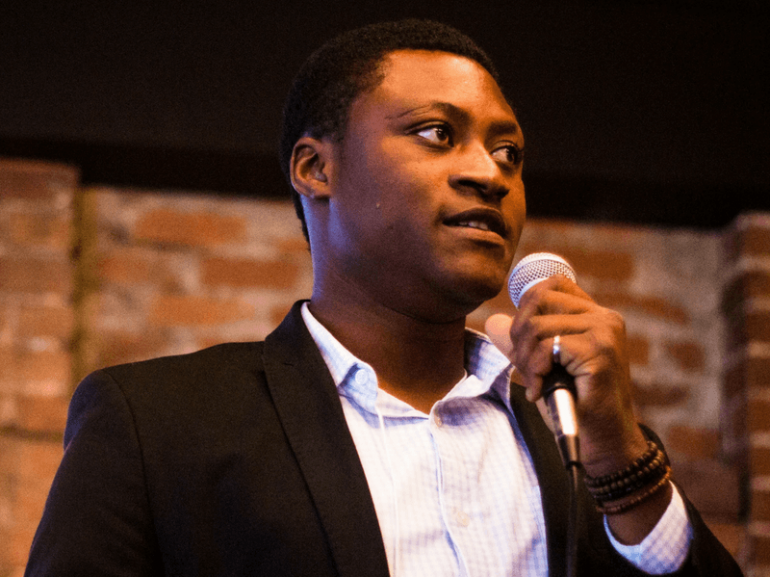As part of a regular series powered by Microsoft, BetaKit interviews prominent Canadian CTOs speaking earnestly on the biggest challenges they face in their role, as well as future technology predictions in their space.
Throw a rock and you’re likely to hit a startup that provides data analytics. But there are few startups that parse big data in a meaningful way to produce insight.
That’s where Metricsflow comes in. The company provides an AI-powered marketing intelligence platform. Under the leadership of CTO Isaac Adejuwon, Metricsflow’s tech team is the largest in the company and is now up to eight people.
The Lean machine
Adejuwon said that guiding a development team through a world of nearly unlimited data points to analyze requires a relentless focus on the customer pains Metricsflow’s product is meant to solve.
“For me, the role is really about understanding the customer that we’re building features for,” he said. “Then using Lean Startup methodology to narrow it down to the best feature to be built and shipped out to customers.”
“Tech is fundamental to cultural, societal, and economic change. If you solve a pain point, you add more value.”
– Isaac Adejuwon
A true student of the Lean framework, Adejuwon referenced the constant vigilance required to only build what the customer needs throughout our interview. For Metricsflow, this means mining support tickets and ad hoc customer conversations in order to identify what’s next in the product pipeline. Slightly different from a customer-first product mentality that focuses on features with the highest customer demand, Adejuwon uses Lean to identify what will have the biggest impact for customer pains and what the team can produce efficiently.
“The biggest thing here as we scale up our team is to make sure everyone understands [customer need],” he said. “It’s not code. It’s not number of people. It’s the pain point we’re addressing – and we have to be the best at that.”
Becoming the best at solving customer pain points presents an interesting challenge in the world of data analytics; sometimes the best way to solve customer pains is through completely new technology that your current stack may not be able to support. In these instances, Adejuwon is an advocate of leveraging existing infrastructure to build things out faster.
“CTOs need to leverage existing support and solutions to help get to where [they] need to be quicker. In our case, we’re using Microsoft Azure,” he said, adding that many features need to be shipped quickly to meet customer demand, so prioritizing them is based on a deep understanding of the problem combined with Lean logic in the development process.
Building developer buy-in
With tech, things can always go wrong. Whether it’s client problems during off hours or a bug that crashes the platform, companies need to be prepared. Most CTOs and other business executives would say that’s part of the job with a startup, so don’t join one if you aren’t ready for it. Adejuwon takes a different approach, saying that teams should be given the chance to buy into these kinds of emergencies before they arise.
Our founder, Isaac Adejuwon pitching at #PropelDemoDay pic.twitter.com/G58ujbrLtx
— metricsflow (@metrics_flow) November 29, 2016
“The subtle way to [get buy-in] is to help developers understand the impact of their team on the business and help them understand the need,” he said. “Typically, developers are very, very excited to jump in when there’s a problem, so it’s more building a culture of development rather than throwing things at developers.”
That said, Adejuwon didn’t mince words when giving advice to senior technologists in large firms considering a startup CTO role. Bluntly, they better be willing to roll up their sleeves.
“You need to innovate to stay in the game,” he said. “There’s a fundamental change from managing large development organizations. CTOs have limited resources and a small team – and you have to get the best out of them – so they will have to roll up their sleeves and be part of the team.”
CTO is a lifestyle
With the ever-changing world of technology and the increasing demands it puts upon a CTO, it’s easy to feel overwhelmed with the job. A startup CTO has to be aware of new technologies all the time, get out of their comfort zone regularly, but also maintain laser focus and motivate a small team to act. It’s a tough job.
Adejuwon’s answer is to make it a lifestyle, not a job.
The unlimited data pouring out of modern, connected tech makes problem identification ever-more important.
“I set my own time for myself, my friends, and my family,” he said. “When I’m not doing that, I’m working. [Learning] has become a need-to-do and you prioritize it. It’s about staying close to pain points, staying lean, and being efficient at the same time.”
Extending this thought into advice for all CTOs, Adejuwon said that while a CTO will need to write code, manage, and lead, the core focus of a CTO is the customer pain point.
Becoming a CTO means that the job “is no longer about writing code or sitting down and building stuff. If CTOs focus on understanding customer pain points, [they] can build solutions to those problems.”
Given the importance of technology in our lives, Adejuwon’s advice rings true as more than a simple adage to care about your customer. The unlimited data pouring out of modern, connected tech makes problem identification ever-more important.
“Tech is fundamental to cultural, societal, and economic change,” he said. “If you solve a pain point, you add more value.”


